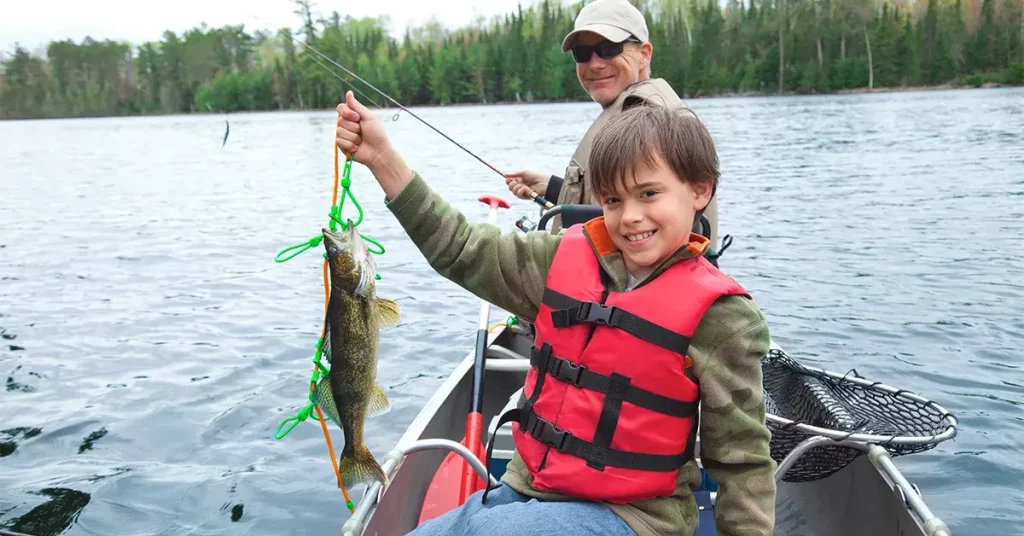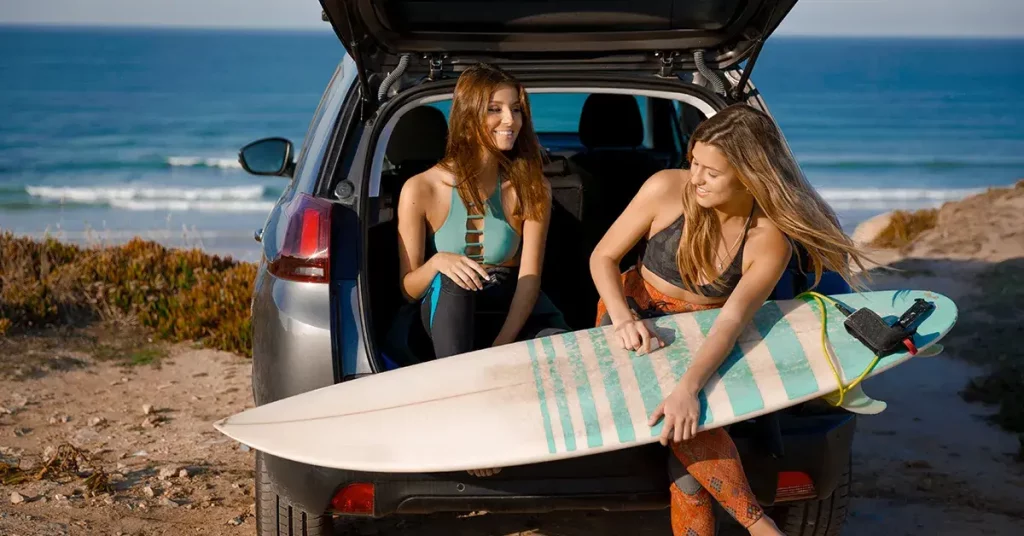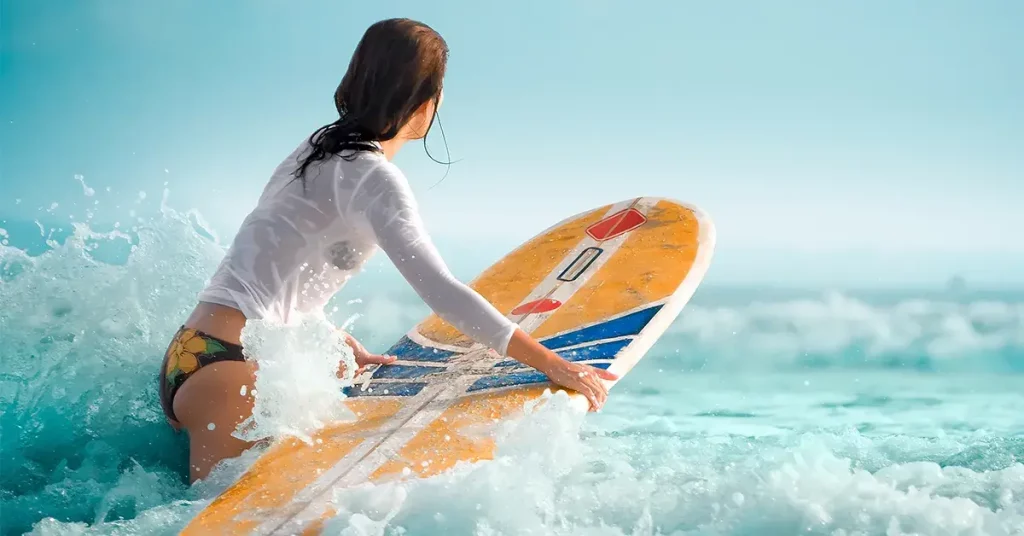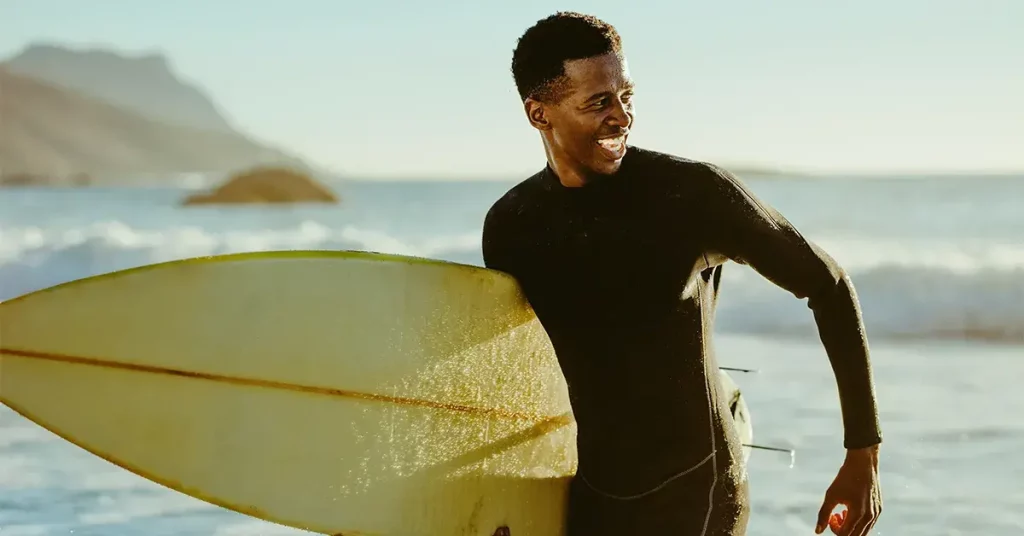If you fish from a canoe or other small craft, hooking up a small portable fish finder will seriously step up your odds of catching that trophy fish! Instead of relying on guesswork and dumb luck, you’ll be able to zero in on favorable underwater features and find fish much more effectively.
Smaller fish finders are ideally suited for use with canoes and other small craft, as they take up a minimal amount of space, can easily be swapped between different craft, and often feature many of the same cutting-edge advancements as their larger counterparts.
I’ll break down some of the best fish finders for canoes, kayaks, and other small craft – and help you find the ideal one for your needs and preferences.
Quick Answer: 5 Best Canoe Fish Finders
- Best Portable Fish Finder: Garmin Striker 4 Portable Kit
- Advanced Fish Finder: Hummingbird 5 G2 410260-1 Fish Finder
- Best Castable Fish Finder: Deeper PRO+ Smart Sonar
- Also Consider: ReelSonar Wireless Bluetooth Smart Fish Finder
- Budget Pick: Lucky Portable Fish Finder
Types of Canoe Fish Finders

Fish finders suited for use with canoes come in several different designs. The right one for you will depend on your particular craft and fishing style.
- Portable Fish Finders: Portable fish finders are essentially scaled down versions of traditional fish finders. Some come with high-end features like CHIRP transducers and wide-angle viewing options. Newer models typically feature compact 3 to 5-inch screens, as well as transducers, suction cup mounts, and nylon carry cases. Some models run off of small 12V rechargeable marine batteries, while others are powered by small built-in rechargeable batteries.
- Mountable Fish Finders: Mountable fish finders are all-in-one one-piece units that you can clip to the side of a canoe or kayak. The transducer is built into the base of the fish finder, so setting up the unit takes mere minutes. These units can work with a wide variety of different watercraft, including inflatable fishing tubes.
- Castable Fish Finders: Castable fish finders are a newer entry to the fish finder universe, and allow you to transform your smartphone into a fish finder display. These units are basically small floating transducers that communicate with your phone through WiFi or Bluetooth. Typically, they can be rigged directly on your line as a float, or as a fixed transducer.
Best Portable Fish Finder: Garmin Striker 4 Portable Kit
Feature-packed, compact, and reasonably priced, this fish finder is the ideal choice for canoes, kayaks, and other smaller boats. It comes with many of the same features as larger, higher-priced models, in a compact 3.5” display. CHIRP sonar display uses a range of frequencies to create a crystal-clear picture of the bottom features and crisp easy-to-identify fish arches.
The portable kit includes the fish finder, a sealed rechargeable battery and charger, a carry bag, as well as a transducer cable management, and a suction cup transducer mount. This allows you to use the fish finder without a full-sized 12-volt marine battery, making is perfect for canoe use.
A built-in flasher view and foam transducer float lets you use the display in classic flasher mode – so it can double as an ice fishing fish finder or for vertical jigging. A simple high sensitivity GPS with waypoints allows you to highlight important locations like brush piles, docks, and other key locations. This GPS doesn’t come with mapping capability, so if that’s important to you, you’ll need to look at a pricier model.
The entire unit is completely watertight, so you don’t need to worry about getting the display soaked by a rogue wave or sudden downpour.
Key Features
- Compact, watertight unit with simple and intuitive interface
- Portable kit comes with battery, carry bag, transducer suction mount, and foam float
- CHIRP sonar display provides crystal clear image
- Can be used in classic flasher mode for vertical jigging or ice fishing
See Pricing On:
Advanced Fish Finder: Hummingbird 5 G2 410260-1 Fish Finder
If you’re looking for a full-featured fish finder in a compact and portable package, you’ll have a tough time topping this superb specimen from Hummingbird. It features a stunning 800 x 480 pixel 5-inch color WVGA display, dual beam sonar, CHIRP digital sonar, micro SD card slot for extra mapping functionality, and precision internal GPS chart plotting.
It also has autochart live – which allows you to map the water depth as you move your craft over the surface. The kit includes the transducer, mounting hardware, soft-sided carrying case, gimbal mounting bracket, rechargeable battery and power cable. The battery will last for a full day’s worth of fishing, but you can also purchase a separate battery here if necessary.
Hummingbird has bundled the basemap with the unit, providing you with a clear view of underwater terrain and important points of interest. This includes maps for over 10,000 lakes, plus coastal coverage of US waters. It’s also made the unit compatible with Lakemaster maps, so you can add additional accuracy and detail on contours, depth ranges, and other useful features.
Key Features
- High-def 5-inch 800 x 400 pixel LCD display
- Dual beam sonar
- Digital CHIRP sonar produces crisp, accurate, imagery on structures, fish, and bottom
- Portable kit comes with transducer, gimbal mount, soft case, battery and charger
- Micro SD card for adding additional mapping
See Pricing On:
Best Castable Fish Finder: Deeper PRO+ Smart Sonar
When it comes to castable fish finders, you’ll have a hard time beating the portability and functionality of the Deeper Pro+. Dual beam sonar with both narrow (290kHz 15°) and a wide (90kHz 55°) beams allow you to cover broad areas as well as zoom in for high-detail scanning. The scanner can a casting range of 330 feet, and can scan down to 260 feet deep.
Built-in GPS allows you to create your own underwater depth maps on the fly. Simply cast the fish finder, and then slowly reel it in as it scans the bottom for features, depth and vegetation. Your scans can be saved to Lakebook, Deeper’s bathymetric management platform.
The PRO+ uses Wi-Fi to connect with the fish finder, providing 15 scans per second and 1” target separation. It connects through your smartphone’s Wi-Fi hotspot, and is up to 10 times faster than Bluetooth – plus it doesn’t require an internet connection.
You’ll generally want to use heavy braid when fishing with the Deeper Pro+, as the added weight can cause weaker line to break and fray.
When your fishing from a canoe or other small craft, the transducer can set it the water as you troll – scanning the bottom terrain on the go. An optional clamp-on flexible arm mount allows you to easily set the transducer up for trolling with kayaks and canoes.
Key Features
- Dual beam sonar with narrow and wide scanning options
- Scanner has a castable range of 330 feet and 260 feet deep
- GPS allows you to map the underwater depth
- Lighting fast 15 scans per second and 1” target separation
Also Consider: ReelSonar Wireless Bluetooth Smart Fish Finder
If you’re looking for a basic, lightweight, castable fish finder that can be used just about anywhere, this portable unit about as good as it gets. It’s ideal for canoe, kayak, and raft fishing, as well as for casting from shore. Bluetooth connectivity gives you a casting range of 100 feet, and a maximum waterbed mapping depth of 300 feet.
The 42°/118kHz sonar depth can reach 135 feet deep, and provides detailed mapping of underwater structure, water temperature, fish size, and other detailed features. It has the ability to give you two different fish sizes, both under and over 15 inches. The transducer unit can relay information to your phone from up to 100 feet away, whether or not you have a cellphone signal.
Bundled software allows you to mark GPS spots, weed beds, fallen logs, and other key features for use later on.
Optional fish and strike alarms can be setup – alerting you when a fish has taken your hook or shows up on your screen. This can be particularly useful while trolling from a canoe or kayak, so you don’t need to constantly monitor your screen.
Key Features
- One of the smallest & lightest castable fish finders on the market
- Ideal for canoe, kayak, and shore fishing
- Single wide beam sonar
- Rechargeable battery with 10+ hours of battery life
- Accurate reading down to 135 feet
- Fish size indicator
See Pricing On:
Budget Pick: Lucky Portable Fish Finder
If you’re looking for a functional, portable fish finder without breaking the bank, you’ll have a hard time finding a better unit than this. It features a bright, easy-to-read 2.4” TFT color display, which shows water depth, water temperature, underwater features and fish sizes. An optional fish alarm will sound when the finder detects fish of a certain size (small, medium, and large).
A wireless sonar transducer ball allows you to use it in a variety of different ways, including casting, mounting to a canoe or kayak hull, and floating in your fishing hole while ice fishing. Both the transducer and the display unit use rechargeable lithium ion batteries, with the transducer lasting about 10 hours between charges and the display unit lasting about 4 hours.
The 90-degree sonar angle will detect fish and other features down to 147 feet, and has an operating distance of just under 200 feet. The display unit connects wirelessly to the transducer, and doesn’t require any cell signal to connect.
Key Features
- Fully featured fish finder with 2.4” color LCD display
- Display shows water depth, water temperature, and fish size
- Wireless sonar transducer can be mounted in a variety of different ways
- Both transducer and display unit feature rechargeable lithium ion batteries
- Budget price
How to pick the right canoe fish finder

With so many different models, features, and sizes, choosing the right canoe fish finder for your craft can be a tricky task. Let’s take a look at some of the key features to be aware of when selecting a canoe fish finder.
Size
When selecting a fish finder for canoe, size matters. The size of the screen and the sounder itself should both be taken into consideration. If you plan to paddle farther upstream, or into choppy waters, then it is important to factor in how much space is available in your canoe. It is also important to determine how heavy the finder may be once mounted.
Investing in a large screen will provide more clarity when fishing, but may also take up valuable real estate in the canoe craft, ultimately weighing it down in the water. Striking a balance between acquiring clarity on what’s beneath you and optimizing your aerodynamics is key in selecting the right fish finder for your needs.
Price
While a basic model may help you locate fish and track their movements, a higher-priced unit will likely offer more features. Enhanced features can include displaying water depth as well as potential stumps and logs that could cause an issue if not accounted for. It is important to look at what each version of the fish finder has to offer in order to understand the differences between them and best match your needs.
Keep in mind that the more sophisticated model may come with a heftier price tag, but it could save you some grief when on the water by providing sonar imagery that better maps out underwater terrain.
Portability
Portability is a key factor to consider, especially if you frequently fish from different watercraft. Portable canoe fish finders are small and easy to transport, making them great for swapping between different canoes, kayaks, inflatables, and other boats.
Castable fish finders also work well for shore fishing – making them ideal for anglers who frequently fish from the bank as well as from smaller craft.
Waterproofing
Waterproofing is an important feature to be on the lookout for – especially for anglers that fish in choppier water or rainy weather. Be on the lookout for the IPX waterproofing rating. Waterproofing of IPX6 or greater will provide a good degree of protection from the elements.
If your using a castable fish finder, be sure to protect your smartphone, tablet, or display unit with some kind of waterproof case.
Battery Power
Canoe fish finders are typically powered either by small portable rechargeable batteries, or with larger deep-cycle marine batteries. If you’re looking for a truly portable option, or you don’t want to add a larger battery to your craft, then you’ll want to go with smaller rechargeable batteries.
Most of the models reviewed above are powered with smaller batteries, while some can run on both deep-cycle marine batteries and smaller portable ones.
Transducer Mount
Mounting your transducer to your craft can be done in a variety of different ways, depending on the fish finder design. Transducers are often mounted using suction cup mounts, but can also be mounted to a trolling motor, directly to the hull, or suspended in the water with a transducer mount.
If you’re looking for a transducer mount specifically for canoes, kayaks, pontoons and other smaller craft check out the Brocraft Transducer Mounting Arm.
GPS
GPS is a useful feature to have in canoe fish finders, as it lets you plot out waypoints for docks, weed beds, and other important features. It can also be used to map out your fishing trip, so you can go back and find key locations at a later time.
Of course, fish finders with GPS will cost a bit more than units without it. GPS can be especially useful if you fish on larger lakes or in the ocean. If you’re only fishing in pond or small lake, then it’s not going to be as useful.
Side-Imaging Technology
This cutting-edge technology utilizes high frequency sonar waves that travel out and scan each side of your canoe. This provides you with an incredibly detailed simulation of any bodies of water, which makes it much easier to spot fish in shallow areas or at greater depths.
Not only this, but it will also show you the type of structure on the bottom and vegetation near the surface to increase your chances of catching the big one!
Side-imaging technology can be fairly costly, however, so if it’s not within your budget, traditional 2D sonar might get the job done for a fraction of the price.
FAQ
Can a fish finder get wet?
Fish finders are designed to withstand the elements, which means that they can be exposed to water and dirt without being damaged. Generally speaking, a fish finder will have some degree of waterproofing. Most have an IPX7 water-resistance rating, which means they can be submerged in water up to one meter deep for thirty minutes without sustaining any damage.
Can you put a fish finder on a kayak?
A fish finder can certainly be used with a kayak, adding significant value to the fishing experience. Many kayaks now have ready-made mounting points positioned at a convenient height above the waterline, allowing anglers to easily attach their fish finders and benefit from an enhanced awareness of the waters around them.
At what speed will a fish finder work?
Depending on the size, model, and technology used, some fish finders can work effectively at speeds up to 40 mph. This presents anglers with an effective tool for tracking schools of fish or specific individuals as they travel around a lake or ocean setting at higher speeds than previously possible.




